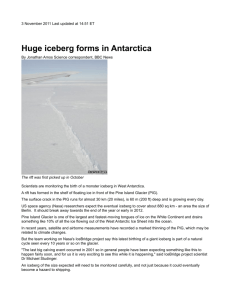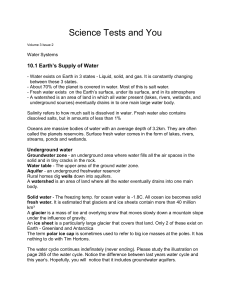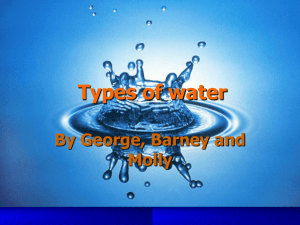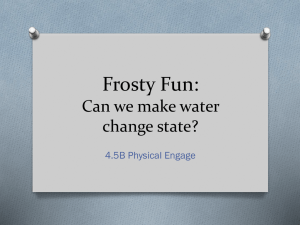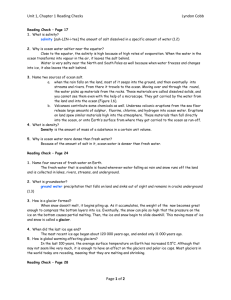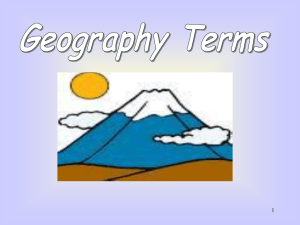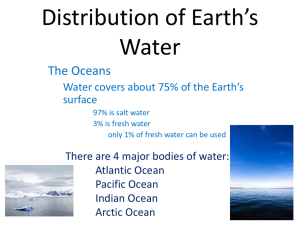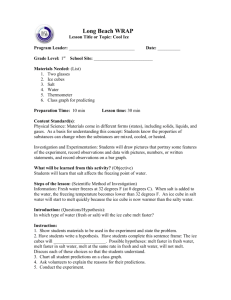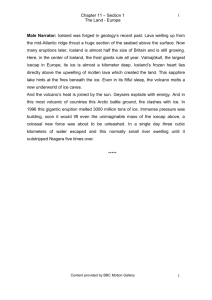10.1 ANSWERS TO CHECK AND REFLECT pg. 289 KEY
advertisement
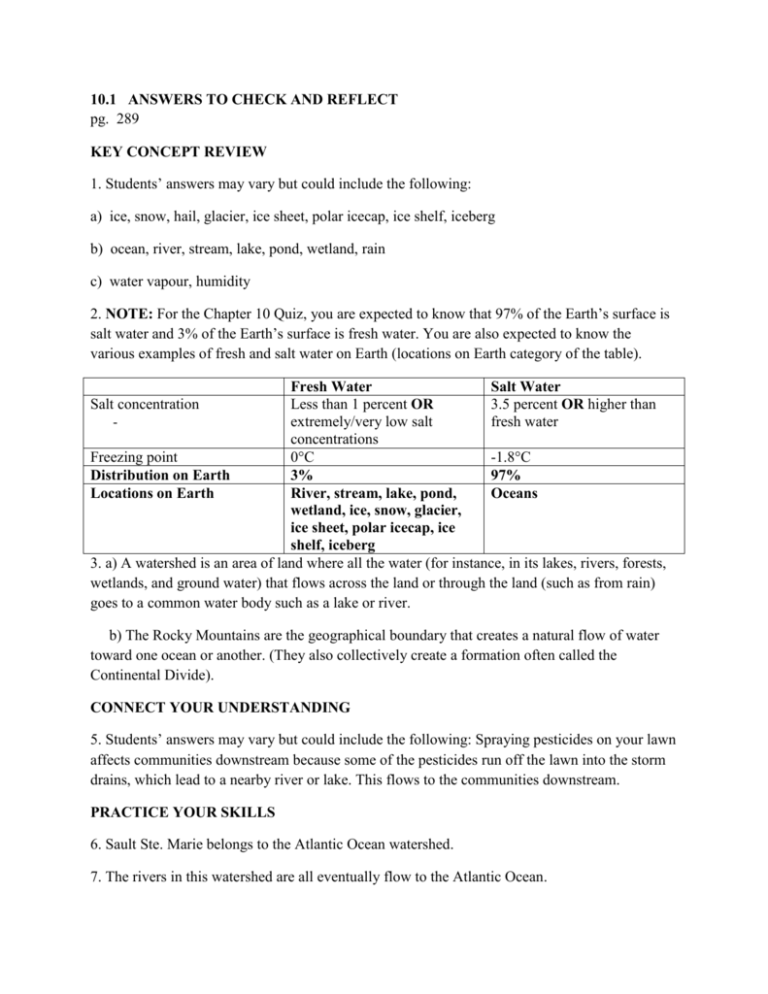
10.1 ANSWERS TO CHECK AND REFLECT pg. 289 KEY CONCEPT REVIEW 1. Students’ answers may vary but could include the following: a) ice, snow, hail, glacier, ice sheet, polar icecap, ice shelf, iceberg b) ocean, river, stream, lake, pond, wetland, rain c) water vapour, humidity 2. NOTE: For the Chapter 10 Quiz, you are expected to know that 97% of the Earth’s surface is salt water and 3% of the Earth’s surface is fresh water. You are also expected to know the various examples of fresh and salt water on Earth (locations on Earth category of the table). Fresh Water Salt Water Less than 1 percent OR 3.5 percent OR higher than extremely/very low salt fresh water concentrations Freezing point 0°C -1.8°C Distribution on Earth 3% 97% Locations on Earth River, stream, lake, pond, Oceans wetland, ice, snow, glacier, ice sheet, polar icecap, ice shelf, iceberg 3. a) A watershed is an area of land where all the water (for instance, in its lakes, rivers, forests, wetlands, and ground water) that flows across the land or through the land (such as from rain) goes to a common water body such as a lake or river. Salt concentration - b) The Rocky Mountains are the geographical boundary that creates a natural flow of water toward one ocean or another. (They also collectively create a formation often called the Continental Divide). CONNECT YOUR UNDERSTANDING 5. Students’ answers may vary but could include the following: Spraying pesticides on your lawn affects communities downstream because some of the pesticides run off the lawn into the storm drains, which lead to a nearby river or lake. This flows to the communities downstream. PRACTICE YOUR SKILLS 6. Sault Ste. Marie belongs to the Atlantic Ocean watershed. 7. The rivers in this watershed are all eventually flow to the Atlantic Ocean.


